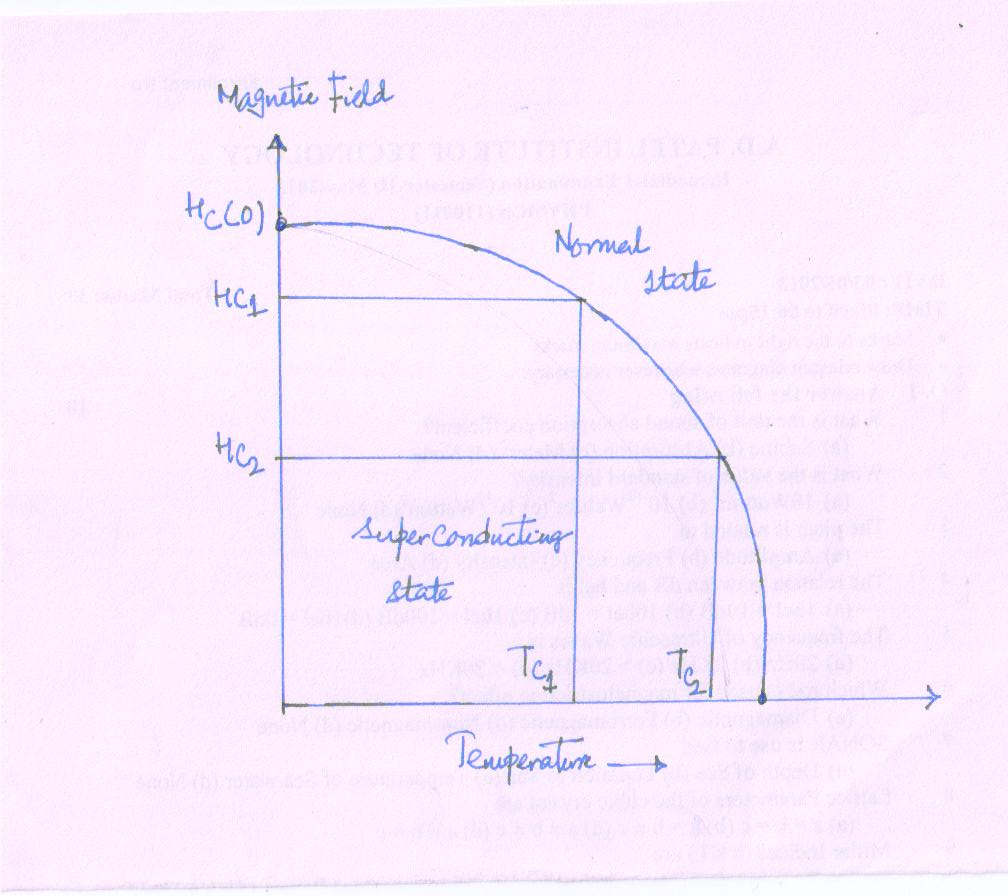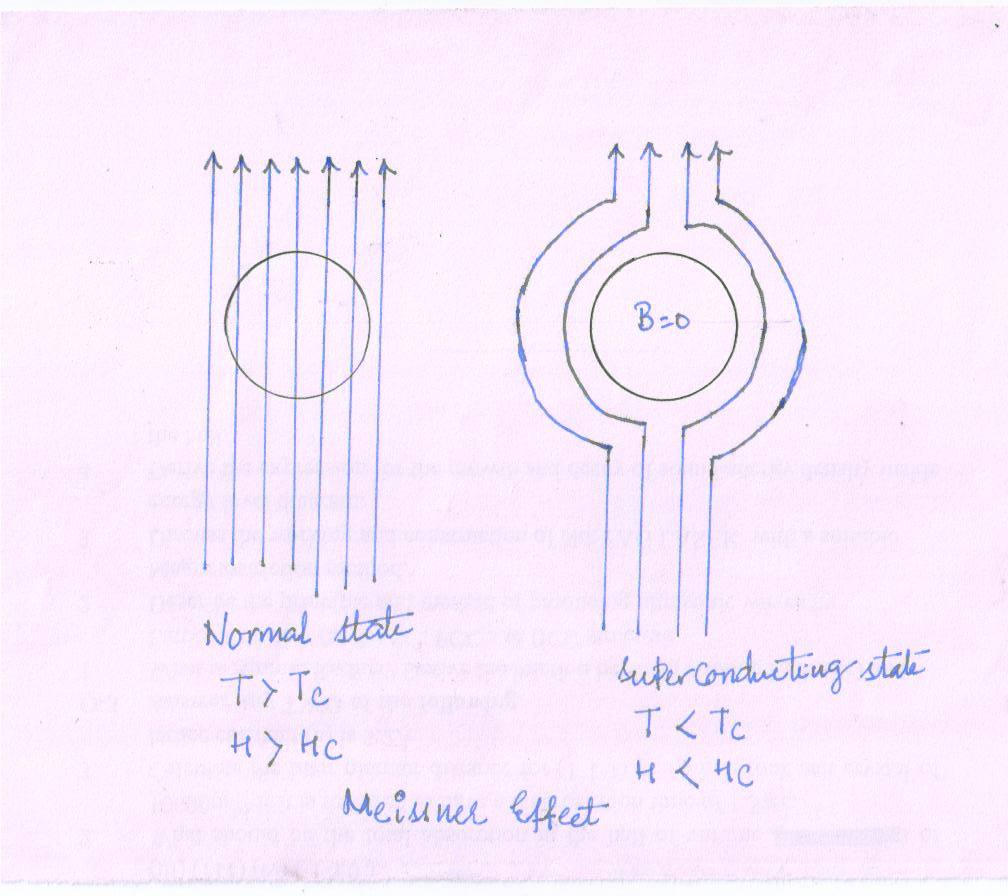Site pages
Current course
Participants
General
MODULE 1. Magnetism
MODULE 2. Particle Physics
MODULE 3. Modern Physics
MODULE 4. Semicoductor Physics
MODULE 5. Superconductivty
MODULE 6. Optics
5 April - 11 April
12 April - 18 April
19 April - 25 April
26 April - 2 May
LESSON 21. Basic Concept of Superconductor
Superconductivity
It is a state of matter exhibited at very low temperatures where the resistivity of the material drops to zero and become perfect diamagnetic.
Super conducting state is influenced by temperature, current and magnetic field.
There exist critical values for these three parameters, above which the material passes into normal state.
It is designated for use in the field of medicine and particle physics. It is being tried for use in transportation and transmission of power.
Recently, the high temperature ceramic superconductors raised the hopes of using superconductors in making more efficient and smaller electrical and electronic devices at normal temperature.
Phenomena
-
Metal are good conductors of electricity as they contain large number of free electrons. As a result low resistance offered by them to the flow current is attributed to the scattering of the free electrons by vibrating ions of the lattice. As temperature increases, the amplitude of the lattice vibrations increases and causes more scattering of electrons leading to more resistance.
-
Even at 0 K (-273), metals offers finite resistance is called residual resistance. It is attributed to scattering of electrons by impurities and crystal defects present in the material.
-
The variation of resistivity of normal metals with temperature is shown in Fig.
-
It indicates the existence of residual resistance (ρr).
-
H Onne was explained the behavior of metals at very low temperature.
-
The electrical resistance of highly purified Hg dropped suddenly to zero at a temperature of 4.2K.
-
This transition is reversible, when the metal heated above the transition temperature of 4.2K, the Hg regained its resistivity.
-
H Onne named the phenomenon as superconductivity.
-
Superconductivity was a strictly low temperature phenomena; some ceramic were found to exhibit superconductivity at high temperature of about 120K.
-
It was discovered for Lead, Zink, Aluminum and other metals and number of alloys.
-
Superconductor is the phenomenon in which the electrical resistance of materials suddenly disappears below a certain temperature.
-
The materials that exhibit superconductivity and which are in the superconducting state are called superconductors.
Transition Temperature
The temperature at which a normal material suddenly changes into a superconductor is called transition temperature Tc .
It is also called as critical temperature.
Critical Magnetic Field
-
Superconducting state depends on the strength of the magnetic field in which the material is placed Fig.

-
It is vanishes if a sufficiently strong magnetic field is applied.
-
The minimum magnetic field, which is essential to regain the normal resistivity, is called critical magnetic field Hc .
-
When the applied magnetic field exceeds the critical value Hc , the superconducting state is destroyed and the material goes into normal state.
-
The value of Hc varies with the temperatures.
-
It shows the dependence of Hc on temperature in a typical semiconductor.
-
At temperature below Tc in absence of magnetic field, the material is in super conducting state.
-
When magnetic field is applied and as its strength reaches the critical value material is in super conducting state.
-
When magnetic field is applied and as its strength reaches the critical value Hc, the superconductivity in the material will be disappears.
-
At any temperature T < Tc , the material remains superconducting until a corresponding critical magnetic field Hc is applied.
-
When the magnetic field is exceed than critical magnetic field Hc, the material goes into normal state.
-
The relation between magnetic field and temperature for the superconducting phenomena is
\[{H_c}\left( T \right)\] = \[{H_c}\left( 0 \right)\] \[\left[ {1 - {{\left( {{T \over {{T_c}}}} \right)}^2}} \right]\]
\[{H_c}\left( T \right)\] - Critical magnetic field at temperature K
\[{H_c}\left( 0 \right)\] - Critical magnetic field at 0K
T - Temperature in K
Tc - Critical temperature at magnetic zero field
Meissner Effect
In 1933, W Hans Meissner found that when superconductors are cooled below the critical temperature in presence of a magnetic field, the magnetic flux is expelled from the interior of the specimen and a super conductor becomes a perfect diamagnetic in nature.
This phenomena is known as Meissner Effect Fig.

Meissner found that as the temperature of the specimen is lowered to Tc, the magnetic flex is suddenly and completely expelled from it.
The flux expulsion continues for T < Tc .
The effect is reversible, when the temperature is raised from below Tc , the flux suddenly penetrates the specimen at T = Tc and material returns to the normal state.
The magnetic induction inside the sample is
B = \[{\mu _o}\left( {H + M} \right)\]
H Applied magnetic field
M Magnetization produced in the sample
At T < Tc ,B = 0
0 = \[{\mu _o}\left( {H + M} \right)\]
H = -M
The susceptibility of the material
\[{M \over H}\] = χ = -1
The sample is diamagnetic and the state in which magnetization cancels the external magnetic field completely is referred to as perfect diamagnetic.